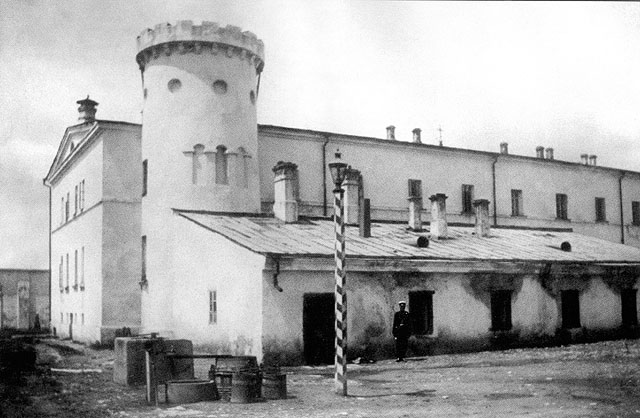One of the oldest and most famous prisons in Russia is the largest pre-trial detention center in the capital. What is Butyrka, tens of thousands of prisoners who have been in it since the 18th century have learned. In December 2018, the leadership of the Federal Penitentiary Service announced the decision to close the famous remand prison. The general public, including human rights defenders, federal and Moscow officials, proposes to make a museum in the prison building.
The base of the Butyrka
In the second half of the 18th century, a small wooden prison worked at the Butyrskaya outpost; nearby were the barracks of the Butyr hussar regiment. Her first famous prisoner was in 1775 Emelyan Pugachev. He was kept in a cage, chained up to his execution. The jail was called the Butyrka. The meaning of the word, however, is not known to everyone. These are several houses on the outskirts, settlements or a small settlement separated by a field or forest from the main settlement.

In 1784, Catherine II allowed to build a provincial stone prison castle instead of a wooden prison, about which she wrote in a letter to Moscow Governor General Chernyshev. The permit was accompanied by a general plan of the building, developed by the famous Russian architect Matvey Kazakov. According to the project, the prison castle had four towers: Severnaya, Yuzhnaya (Pugachevskaya from 1775, according to legend, it was Pugachev in its basement), and Chasovaya and "Police". At the end of the 18th century, the Intercession Church was built in the center of the castle square, which was also designed by Kazakov. At present, the Butyrka building is a monument of architecture and history protected by the state.
The refuge of criminals and rebels
Not only the Russian criminals, but also the revolutionaries who were awaiting their departure to Siberia, learned very quickly what the Butyrka was. Since the end of the 19th century, the castle became the central transit point through which almost 30 thousand people passed each year. The prisoners here not only sat, but also worked. At Butyrka, various handicraft workshops operated (tailor, shoe, bookbinding, carpentry, where they even made Viennese chairs and burned wood). For women and children who voluntarily went for exiles, the Sergievo-Elizavetinsky shelter worked
Political exiles were placed in prison towers. In 1884, the great Russian writer L.N. Tolstoy visited Yegor Lazarev (political prisoner). Which subsequently became the prototype of the revolutionary Nabatov in the novel "Sunday". Later, Tolstoy talked a lot with prison guard I.M. Vinogradov. about life in prison. And in order to better understand what “Butyrka” is and how it is arranged, he even went along with the prisoners to the Nikolaev Station.
The famous pre-revolutionary "sitters"
During the 1905 revolution, insurgent workers tried to capture the Butyrka, but the escort team managed to fight back.
In 1907, the investigative department started working in the prison, and the following year a hard labor was organized.
At the beginning of the twentieth century they learned what Butyrka was, the revolutionaries Nikolai Shmit and Ivan Kalyaev, sailors from the rebellious Ochakov, famous poets Sergei Yesenin and Vladimir Mayakovsky. In 1908, the American maestro Harry Houdini gave a performance in prison. He was shackled and placed in a wooden box upholstered in iron, in which they transported especially dangerous criminals. The illusionist managed to free himself in 28 minutes, to the surprise and glee of the audience.
Nestor Makhno spent six years in the famous prison, who was released, like all political prisoners, in 1917 after the February Revolution. Then Felix Dzerzhinsky who was sentenced to 6 years of hard labor was released from prison.
Soviet period
After the revolution
After the October Revolution, chambers freed from revolutionaries quickly filled with new prisoners. Alexander Solzhenitsyn, who was also in Butyrka, wrote that by 1918 the prison was overcrowded and even a laundry room for 70 people was organized in the laundry room. Pokrovsky temple was closed in 1922 and again started working only in 1991.
During the years of mass repressions, the concept of "Butyrka" somewhat lost its "prestige", state criminals were sent to the "Lubyanka". During these years, up to 20 thousand people were in prison at the same time, up to 170 prisoners were in each cell. Sometimes new prisoners sat on the stairs for several days, waiting for the persons sentenced to be shot to free up their cells.
During the Great Patriotic War, workshops worked on the territory of the prison, where prisoners produced products for the army.
During the years of perestroika
In the spring of 1994, a group of former prisoners led by Sibiryak (Sergey Lipchansky), having agreed with the guards, decided to visit their comrades in the Butyrka detention center. However, someone reported a police event and 34 criminals and FSIN officers were arrested. Many workers were subsequently fired, and two were sentenced to a year in prison.
After 1996, women were no longer placed in the famous prison (with the exception of the psychiatric ward of the hospital). The most famous prisoner of this period was the oligarch Vladimir Gusinsky, who stayed here for three days.
Currently
Now Butyrka, the largest pre-trial detention center in Moscow, is used to support less than 2,000 people. On the territory of the Intercession Church, a prayer room and a synagogue are open. Despite the reconstruction, the detention of prisoners still does not quite meet the established standards. As many human rights activists note, the prison building is so ancient that it is outdated both morally and physically. The FSIN leadership and the public hope that in the coming years it will be possible to close the famous pre-trial detention center.